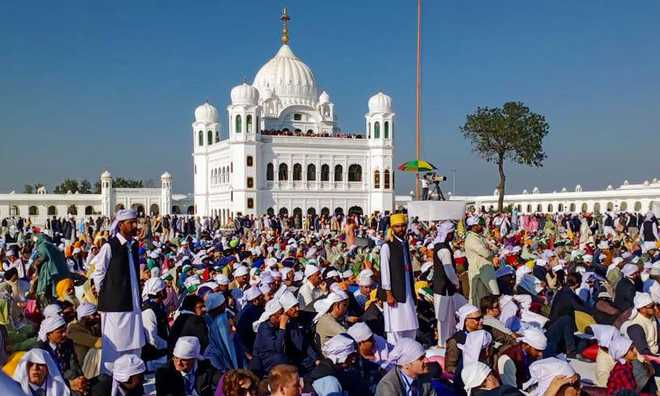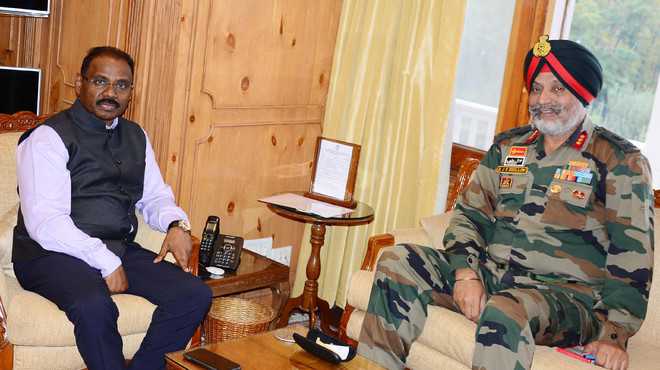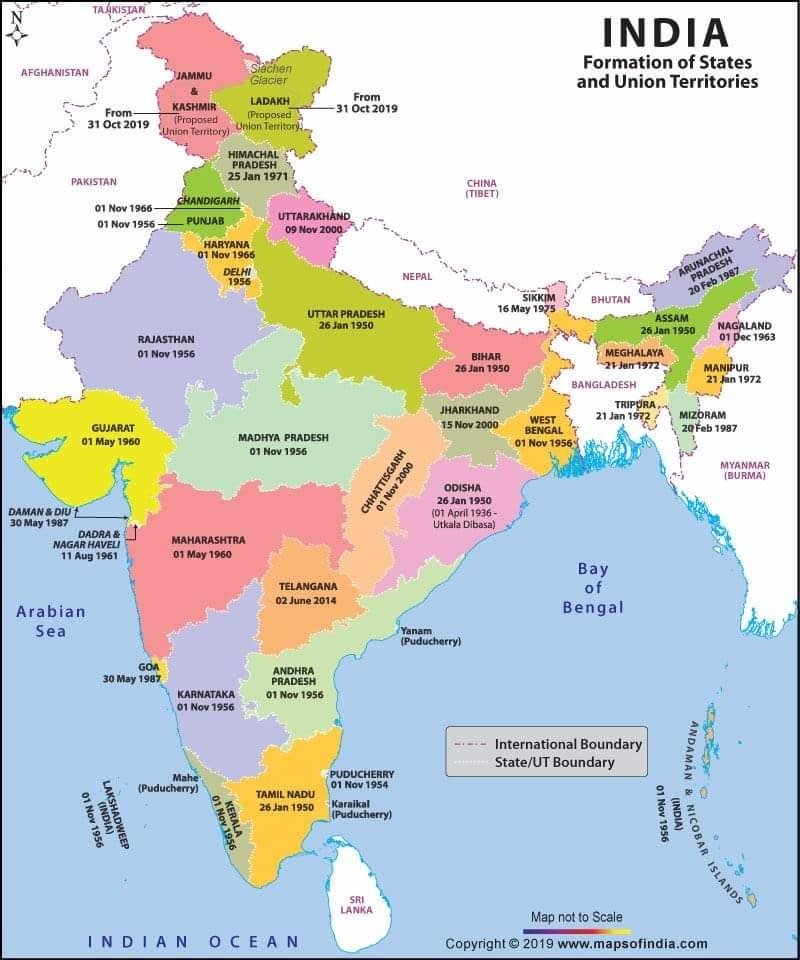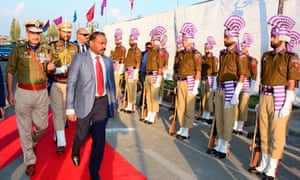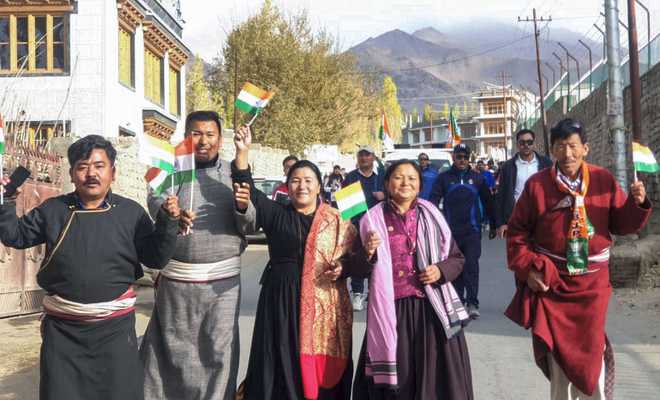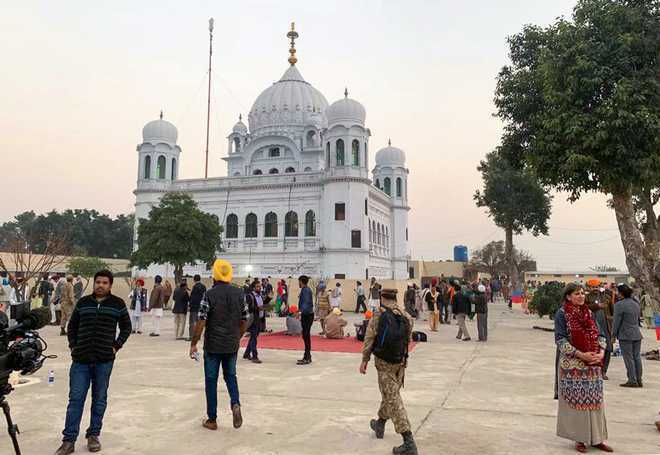
Kartarpur, November 9
The following is the chronology of major events leading up to the opening of the landmark Kartarpur Sahib Corridor linking Gurdwara Darbar Sahib in Pakistan’s Kartarpur to Dera Baba Nanak shrine in India’s Gurdaspur district.
1522: The first Gurdwara, Gurdwara Kartarpur Sahib, was established by the first Sikh Guru, Guru Nanak, where he is believed to have died.
February 1999: The Kartarpur Sahib corridor was proposed by the then Prime Minister Atal Bihari Vajpayee when he took a bus ride to Lahore during a peace initiative with Pakistan.
2000: Pakistan agrees to allow Sikh pilgrims from India to visit the shrine visa-free (and without passport) by constructing a bridge from the India side of the border to the shrine.
August 15, 2018: Punjab minister Navjot Sidhu attends Pakistan Prime Minister Imran Khan’s swearing-in ceremony in Islamabad.
August 21: Upon his return from Islamabad, Sidhu says that Pakistan Army chief General Qamar Javed Bajwa informed him that the Pakistan government would open the Dera Baba Nanak (Kartarpur) corridor on Guru Nanak’s 550th birth anniversary.
November 22: Indian Cabinet approves the Kartarpur corridor from Dera Baba Nanak to the Pakistan border.
November 26: Vice President Venkaiah Naidu lays the foundation stone of the Dera Baba Nanak – Kartarpur Sahib Corridor (up to the International Border) at an event at Mann village of Gurdaspur district of Punjab.
November 28: Prime Minister Imran Khan lays the foundation stone of the 4-km corridor on the Pakistan side.
December 3: Pakistan opens immigration centre at the Kartarpur border.
March 14, 2019: The first meeting between officials of India and Pakistan on Kartarpur Corridor takes place in Attari on the Indian side of the Attari-Wagah border.
March 19: India, Pakistan hold technical talks, discuss coordinates.
March 29: India conveys concerns to Pakistan over presence of Khalistani separatist on Kartarpur panel.
April 16: Experts and technicians from Pakistan and India hold technical meeting on Kartarpur corridor at Zero Point (Kartarpur).
May 27: India, Pakistan officials meet, discuss modalities for Kartarpur corridor.
July 8: Pakistan welcomes Indian media to attend 2nd meeting on Kartarpur corridor.
June 11: Pakistan allocates Rs 100 crore in 2019-20 budget for Kartarpur corridor project.
July 14: Pakistan and India hold second round of the talks on the Kartarpur corridor in Wagah; India gives Pakistan dossier on possible attempts to disrupt Kartarpur Sahib pilgrimage.
August 30: Technical talks between Pakistan and India takes place at Zero Point.
September 4: Third round of talks between officials from Pakistan and India on the Kartarpur corridor takes place at Attari.
October 20: Pakistan to open Kartarpur Corridor on November 9, says Prime Minister Imran Khan.
October 21: India express ‘disappointment’ over Pakistan’s USD 20 fee for Kartarpur Sahib but ready to ink pact.
October 24: India, Pakistan sign agreement to operationalise the Kartarpur Corridor.
October 30: Pakistan issues Rs 50 commemorative coin to mark Guru Nanak’s 550th anniversary.
November 1: No need for passport for Sikh pilgrims from India visiting Kartarpur, says Pakistan Prime Minister Khan.
November 4: Sikh separatists, including Jarnail Singh Bhindranwale, feature in Pakistan’s official video on Kartarpur; India conveys its strong objections to Pakistan.
November 5: Sikh pilgrims from India visit Kartarpur Sahib gurdwara in Pakistan, instal golden palanquin.
November 6: India asks Pakistan to clarify if passport will be required for Kartarpur visit amidst confusion over the issue.
November 7: Indian Sikh pilgrims will require passport to visit Kartarpur: Pakistan Army; India to stick to Kartarpur agreement on visits by Indian pilgrims.
November 8: Pakistan will not charge USD 20 as service fee from Indian pilgrims visiting the Kartarpur Sahib Gurdwara on November 9 and 12, Foreign Minister Shah Mahmood Qureshi says, ending confusion over it.
Prime Minister Narendra Modi flags off the first batch of over 550 Indian pilgrims travelling to Gurdwara Darbar Sahib in Pakistan’s Punjab province through the Kartarpur corridor.
Prime Minister Modi inaugurates the Integrated Check Post where pilgrims will be cleared to travel through the newly-built corridor.
Prime Minister Imran Khan inaugurates the Kartarpur Corridor on Pakistani side. PTI





















































